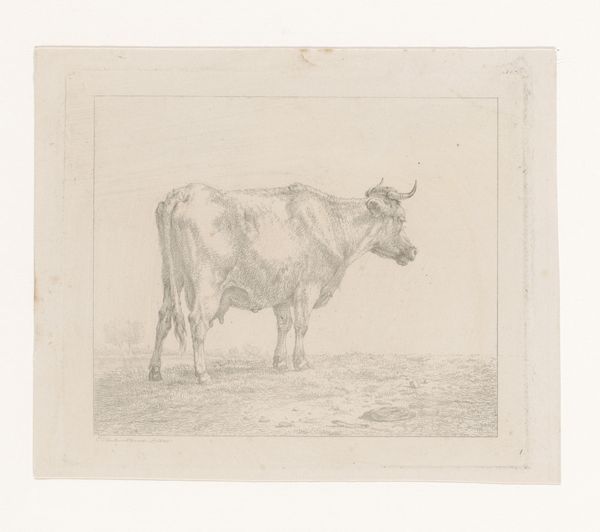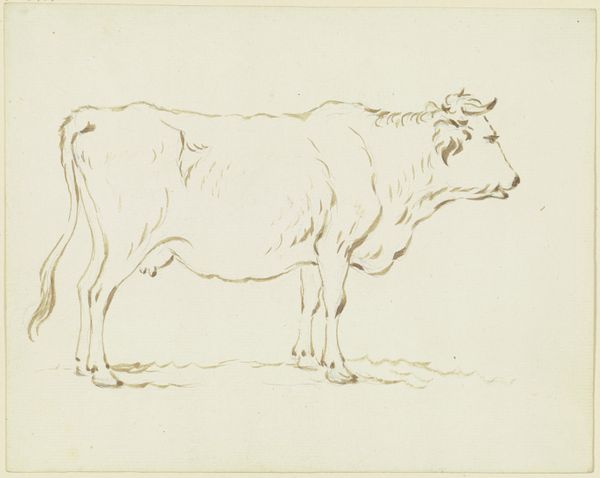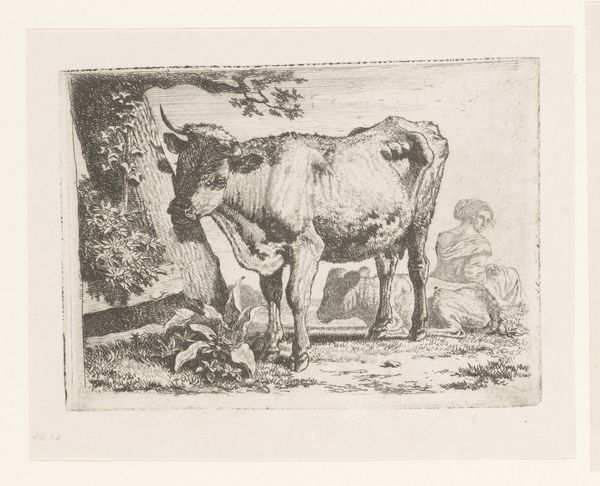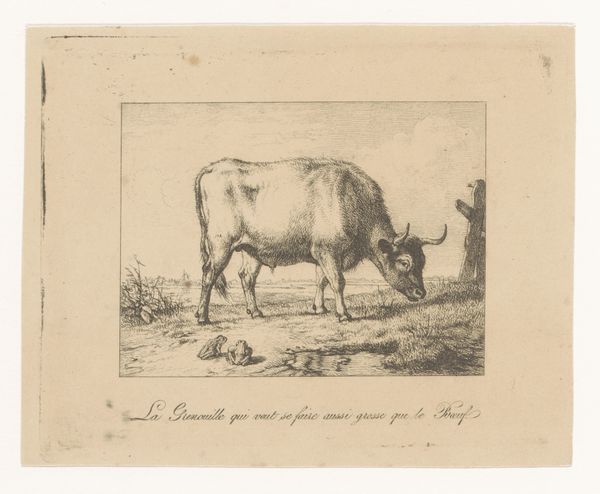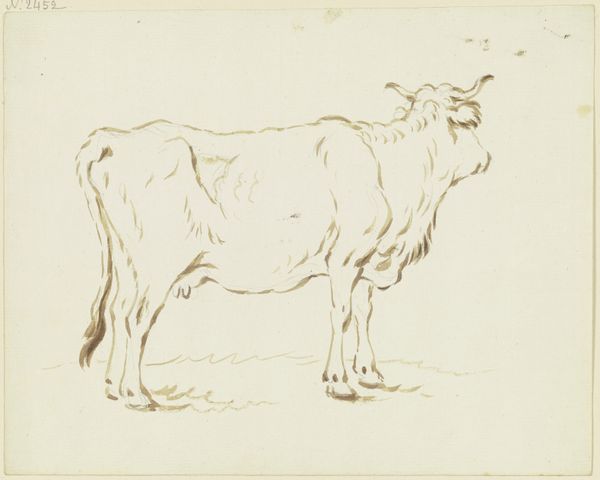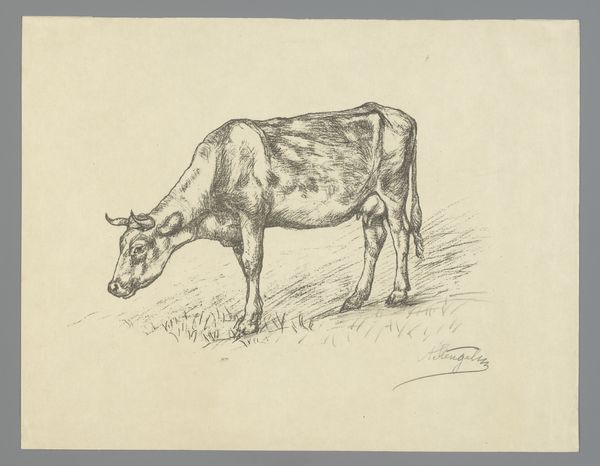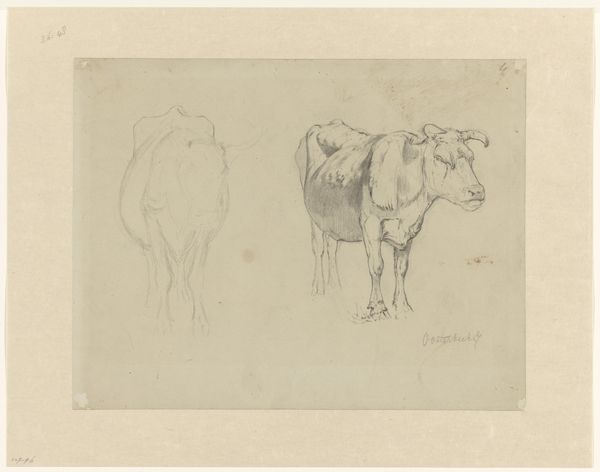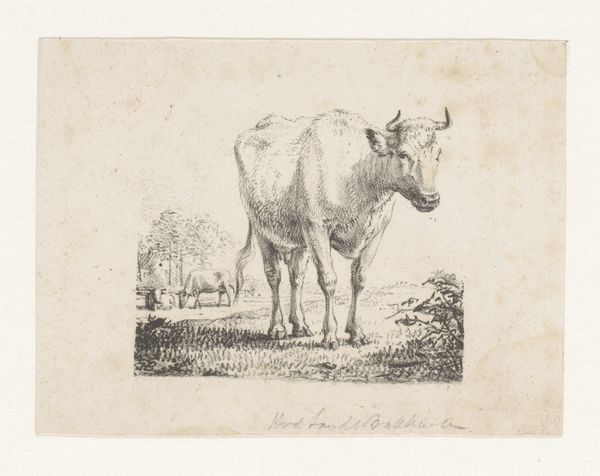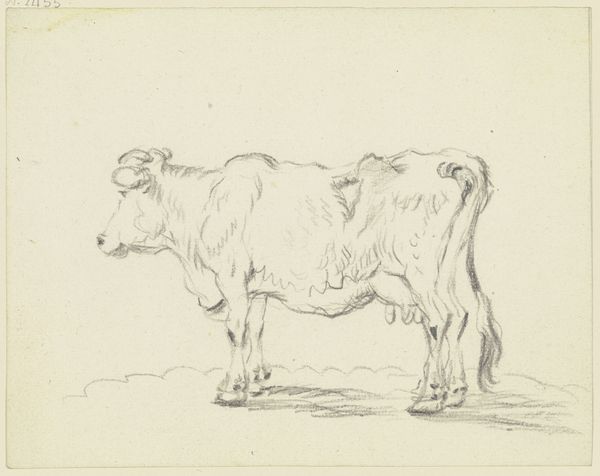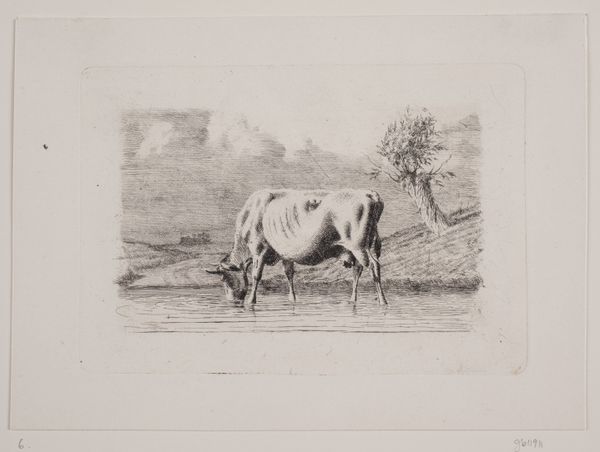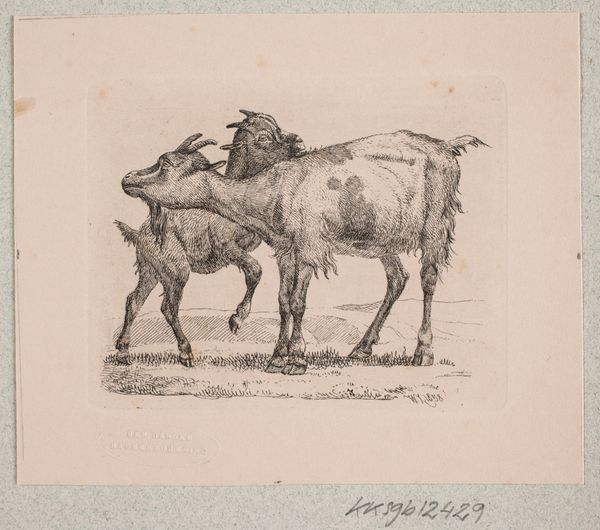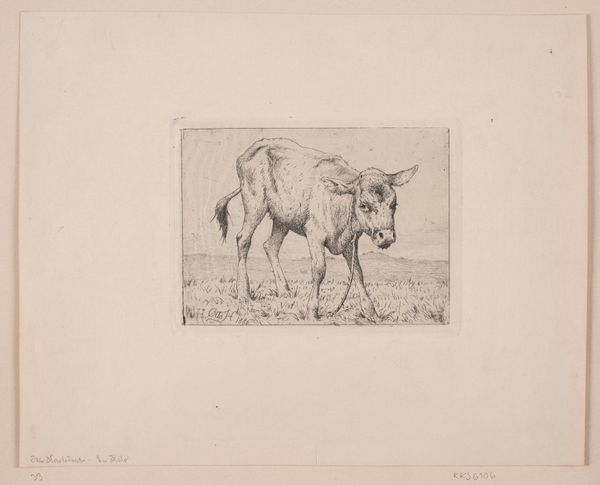
print, etching, paper
#
pencil drawn
#
light pencil work
#
16_19th-century
# print
#
etching
#
pencil sketch
#
landscape
#
paper
#
sketchbook drawing
#
pencil work
#
realism
Dimensions: height 100 mm, width 123 mm
Copyright: Rijks Museum: Open Domain
Eugène Verboeckhoven made this drawing, Grazende koe, with pen in the Netherlands at an unknown date. Verboeckhoven was a 19th-century animal painter. Here, he directs his attention to the humble form of a grazing cow. At this time, the Netherlands was a constitutional monarchy with a booming economy. The art market would have been shaped by the tastes of the middle classes. Though it appears simple, this image carries its own cultural weight. The care and attention that Verboeckhoven gives to the animal suggests the importance of livestock to the Dutch economy and the cultural understanding of animals at that time. A seemingly simple image of rural life can reveal a complex relationship between the art market, social values, and national identity. Historians like myself can shed light on these contexts through careful research into archival sources, market data, and cultural histories. The meaning of art is contingent on the social and institutional contexts in which it is made and viewed.
Comments
No comments
Be the first to comment and join the conversation on the ultimate creative platform.
